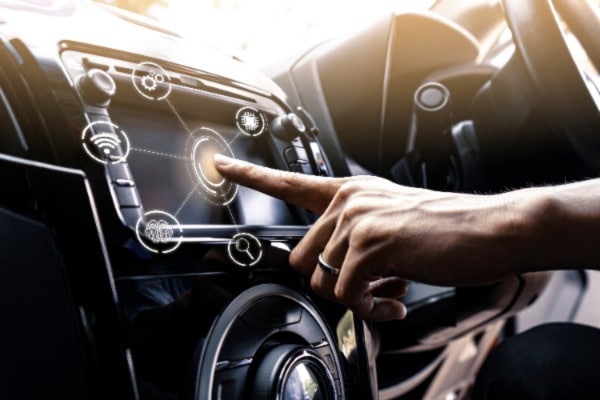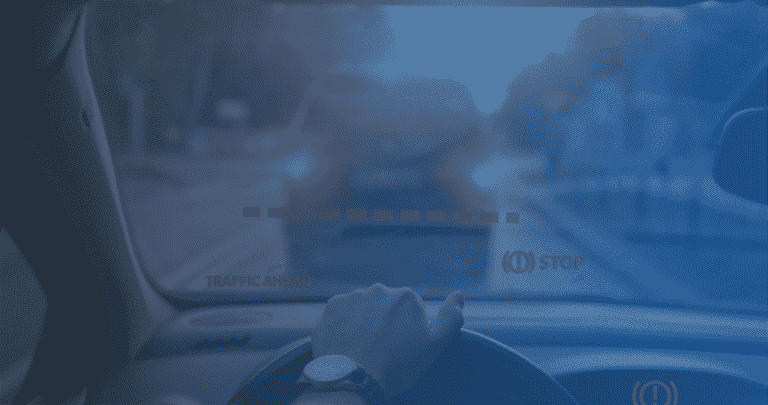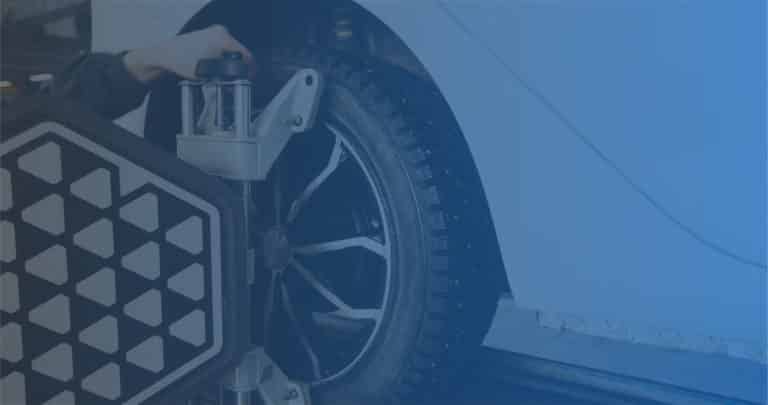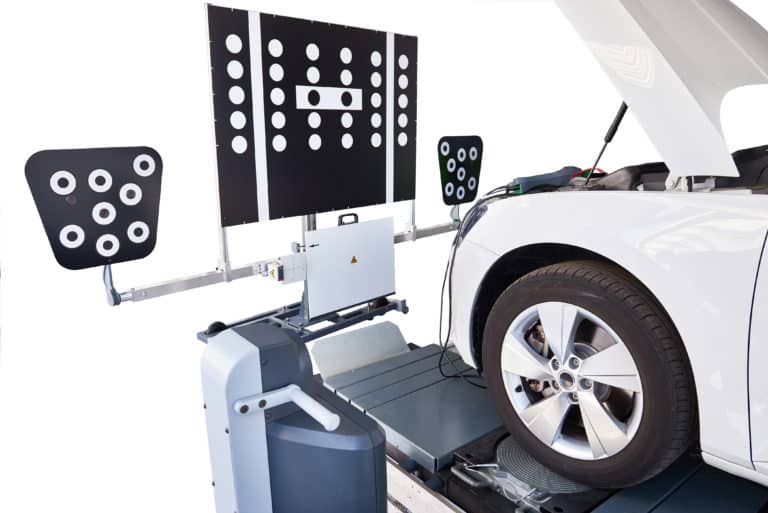Toyota has been at the forefront of automotive safety technology for years, and its latest innovations in advanced driver-assistance systems (ADAS) are some of the most advanced on the market. This tutorial will take a closer look at Toyota’s Safety Sense ADAS features, sensors, and calibration.
What is Toyota Safety Sense?
Toyota Safety Sense (TSS) is a suite of active safety features that use sensors to detect potential hazards on the road to help avoid or mitigate their effects. Active features mean the Toyota ADAS system constantly monitors the environment and intervenes when necessary.
How Toyota Safety Sense Works
To prevent collisions, TSS features are designed to help drivers be aware of their surroundings, make good decisions, and operate their vehicles safely. TSS includes a suite of features that assist and safeguard drivers, passengers, and pedestrians against collision injuries.
TSS addresses three key accident prevention priorities:
- Preventing or mitigating frontal collisions
- Keeping drivers within their lane
- Enhancing road safety during nighttime driving
However, drivers are responsible for their own safety and must always drive safely, obey traffic speed limits and laws and focus on the road while driving. TSS is not a self-driving system and should not be used as one. It is the driver’s responsibility to stay alert and focused while driving.
Toyota ADAS Systems
Toyota offers an array of TSS ADAS features that can be found on different models. Here is a brief overview of some of the most popular Toyota ADAS features:
- Pre-Collision System with Pedestrian Detection: This ADAS system uses a camera and radar to detect potential frontal collisions, either with another vehicle or a pedestrian. If a collision is imminent, the system will provide visual and audible warnings and can even apply the brakes automatically to help avoid or mitigate the collision.
- Lane Departure Alert with Steering Assist: This system uses a camera to detect lane markings and will provide visual and audible warnings if the vehicle begins to drift out of its lane. Additionally, the system is meant to offer mild corrective steering if the driver does not react appropriately.
- Dynamic Radar Cruise Control: This adaptive cruise control system uses radar to maintain a set distance from the car in front, even if it slows down. This system can also bring the car to a stop if necessary.
- Lane Tracing Assist (LTA): If Dynamic Radar Cruise Control is switched on and lane lines are visible, LTA employs preceding vehicles and/or the lines on the road to keep you centered.
- Road Sign Assist: This system uses a highly intelligent camera to read speed limit signs, stop signs, and yield signs. The signs appear on the Multi-Information Display (MID).
- Automatic High Beams: This system uses an intelligent camera to automatically adjust between high and low beams, depending on oncoming traffic.
Toyota Safety Sense currently comes in six packages: TSS-C, TSS-P, TSS 2.0, TSS 2.5, TSS 2.5+, and TSS 3.0.
Toyota Safety Sense C (TSS-C)
This package comes with four active safety technologies, including:
- Pre-Collision System: This system is designed to assist the driver to prevent or mitigate collisions. The system may operate the automatic braking feature at speeds between approximately 7-50 mph. (Some vehicles may come with Pedestrian Detection, or PCS w/PD, that can help mitigate or avoid impact with a vehicle or pedestrian in certain situations.)
- Land Departure Alert: This system is designed to provide an alert to the driver to prevent vehicles from unintentionally departing from their travel lanes. The system is designed to function at speeds of approximately 32 mph or higher on relatively straight roadways.
- Automatic High Beams: They help ensure optimal forward visibility during nighttime driving. The system is designed to function at speeds of approximately 25 mph or higher.
Toyota Safety Sense P (TSS-P)
This package comes with the three safety technologies as TSS-C, and adds:
- Lane Departure Alert with Steering Assist (LDA w/SA): This system includes the same functions as LDA for TSS-C, and for vehicles with equipped electronic power steering, it also provides the Steering Assist feature.
- Dynamic Radar Cruise Control (DRCC): This system helps maintain a preset distance to the vehicle in front. DRCC is designed to operate at speeds above 25 mph. Vehicles with the equipped electronic parking brake may also have full-speed capability with DRCC.
Toyota Safety Sense 2.0
Toyota Safety Sense 2.0 functions include the same package as TSS-P, plus:
- Pedestrian and Bicycle Detection: This system uses an in-vehicle camera and front millimeter-wave radar to detect pedestrians and cyclists, day or night. If a potential collision is detected, the system will provide visual and audible warnings and can even apply the brakes automatically.
- Road Edge Detection: This system uses a camera to detect road edges and painted lines. If the vehicle begins to drift off the road, the system will provide visual and audible warnings.
Toyota Safety Sense 2.5 and 2.5+ (TSS-2.0 and TSS-2.5+)
Introduced for the first time on the MY2021 C-HR, TSS-2.5 adds to the PCS w/PD function:
- Pre-Collision System with Pedestrian Detection (Updated): This system was enhanced with daytime bicyclist detection and low-light pedestrian detection.
- Emergency Steering Assist: This function is another enhancement of PCS w/PD system that helps the driver avoid a pedestrian in their lane via steering assist and avoids crossing out of the lane.
- Intersection Support: TSS-2.5 PCS w/PD includes another function designed to detect a preceding vehicle, or pedestrian in an intersection and may cause typical pre-collision alerts, and/or automatic braking.
Meanwhile, TSS-2.5+, an even more enhanced version that debuted in the MY2021 Toyota Camry’s includes new cameras, millimeter-wave radars, and grille-mounted radars, improves response range and pedestrian detection.
- Enhanced Intersection Support: This system may detect an oncoming vehicle or pedestrian when performing a left-hand turn and may provide audio/visual alerts and automatic braking in certain conditions, in addition to the other enhancements added in TSS-2.5.
TSS 2.5+ is expected to be available on more Toyota vehicles in the future.
Toyota Safety Sense 3.0 (TSS-3.0)
This package, currently only available on the bZ4X battery electric vehicle, improves the Toyota ADAS features from 2.5 and 2.5+, improving upon the performance of each function, as well as adding:
- Risk Avoidance Emergency Steer Assist: This system helps support collision avoidance within the lane by applying gentle braking and steering operation.
- Left Turn Oncoming Vehicle Detection/Braking: This system is designed to apply a warning and automatic braking if the system determines the driver is turning left in front of a coming vehicle.
- Right/Left Turn Oncoming Pedestrian Detection/Braking: This system is designed to apply a warning and automatic braking if the system determines the driver is turning left or right in front of an oncoming pedestrian or cyclist.
- Dynamic Radar Cruise Control with Curve Speed Management (DRCC w/CSM): This system helps the driver manage speed in curves when DRCC is engaged.
Toyota ADAS Sensors
As mentioned, Toyota’s ADAS features are made possible using different sensors around the car. Here is a brief overview of some of the most important ADAS sensors:
- Radar Sensors: Toyota vehicles are equipped with front and rear radar sensors. The front radar sensor is used for features such as automatic high beams, adaptive cruise control, and a pre-collision system. The rear radar sensor is used for features such as blind-spot monitor and rear cross-traffic alert.
- Camera Sensors: Toyota ADAS systems also have front and rear camera sensors. The front camera sensor is used for features such as lane departure warning, lane-keeping assist, and automatic high beams. The rear camera sensor is used for the backup camera.

Toyota ADAS Research and Development
Toyota has also announced ADAS-related research on the following topics:
- Cabin Awareness — Applies millimeter-wave, high-resolution 4D imaging radar to detect occupants (people and pets) in automobiles and may detect them if forgotten.
- Nonlinear Model Predictive Control (NMPC) — Improves the performance of active safety systems by predicting the behavior of other vehicles on the road and determining the best way to avoid a collision.
- Adaptive Headlight Communication Technology — Uses adaptive headlights to draw attention to vulnerable road users to decrease pedestrian and bicyclist injuries.
- Teammate Advanced Drive — An SAE Level 2 autonomous driving system with Advanced Drive and Advanced Park. During highway driving, Advanced Drive can provide automatic steering, acceleration, and braking under driver supervision and plan actions up to six miles ahead. Advanced Park enables hands-free parking and uses a complete-circumference camera and ultrasonic sensors to provide drivers with a bird’s-eye view during parking maneuvers. It is anticipated to be released on Lexus models soon.
As an important note, Car ADAS Solutions always recommends checking the OEM repair procedures before working on any vehicle.
Toyota ADAS Calibration
Currently, about 30% of the services performed in Car ADAS calibration centers are on Toyota cars, a trend that is expected to continue and even increase in the future. Toyota has manufactured more ADAS-equipped vehicles in the U.S. since September 2019 than any other automaker, manufacturing more than 1.8 million AEB-equipped vehicles. To ensure that each Safety Sense system is working properly, all cars require professional ADAS calibration services after fender benders, windshield replacements, and even tire or alignment changes.
Looking for an ADAS solution for your business?
Car ADAS Solutions can help you open and operate your own local ADAS calibration center. We make it easy to get started with all the training and support you need to be successful. See how it works.
Related Articles:







